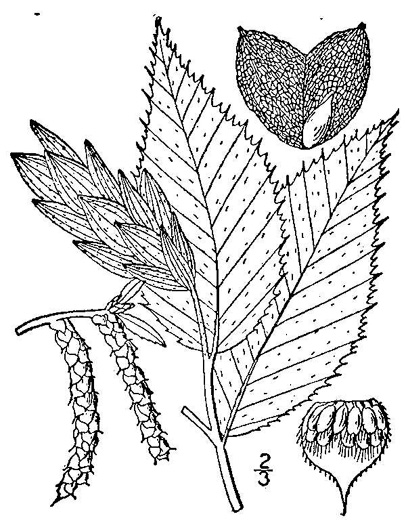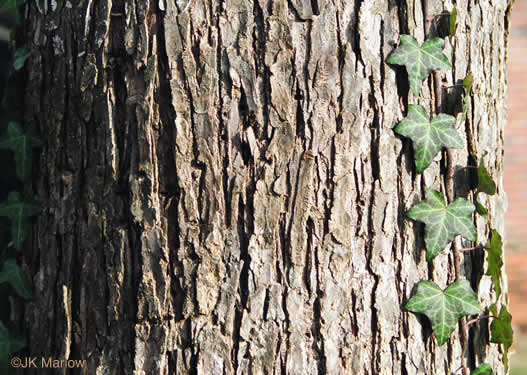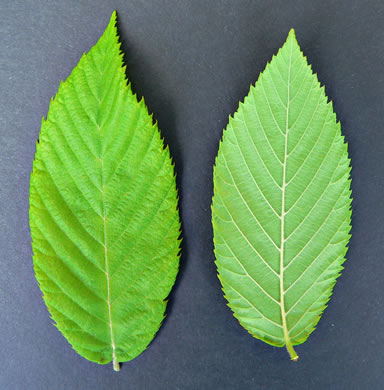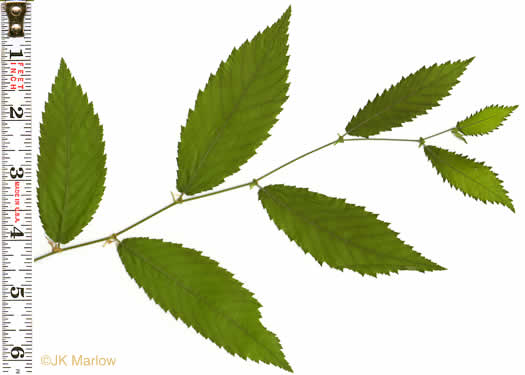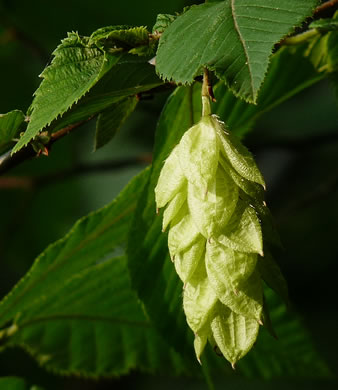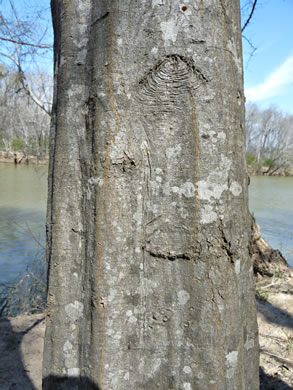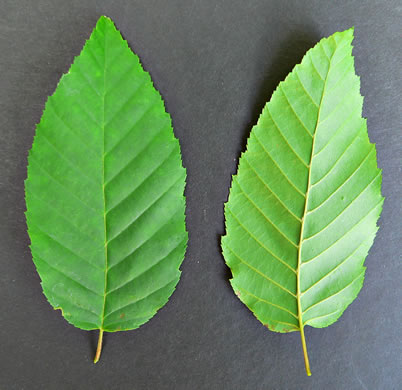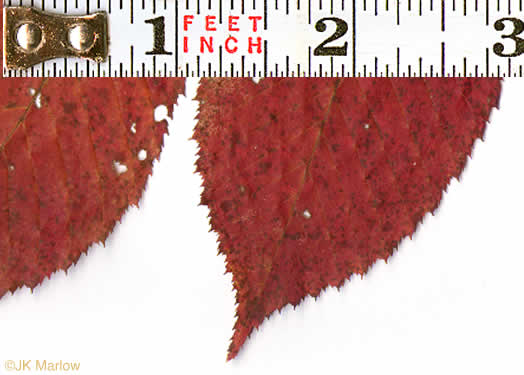Your search found 12 image(s) of Hop-hornbeam and Hornbeam.
To see larger pictures, click or hover over the thumbnails.
To go to the plant's detail page, click its name.
 Habitat: Mesic to dry forests, often rocky, especially over basic rocks, reaching high elevations
Habitat: Mesic to dry forests, often rocky, especially over basic rocks, reaching high elevations
Bark light brown, narrowly grooved or scaly, per Woody Plants of the Blue Ridge (Lance).
Bark thin, finely fissured into narrow plates, often shreddy in appearance, per Native Trees of the Southeast, An Identification Guide (Kirkman, Brown, & Leopold, 2007).
Leaf tips acute to acuminate; lower surfaces finely pubescent, per Native Trees of the Southeast, An Identification Guide (Kirkman, Brown, & Leopold, 2007).
Lvs 2-ranked, blades oblong to elliptical, margins singly or doubly serrate, per Native Trees of the Southeast, An Identification Guide (Kirkman, Brown, & Leopold, 2007).
A hairy pendent conelike cluster of bladderlike sacs, each with one nutlet, per Woody Plants of the Blue Ridge (Lance).
 Look for it on streambanks, riverbanks, bottomland forests, lower slopes, and, depending on variety, in maritime forests or rich cove forests
Look for it on streambanks, riverbanks, bottomland forests, lower slopes, and, depending on variety, in maritime forests or rich cove forests
Bark blue-gray, smooth; trunk twisted and fluted, appearing "muscular", per Native Trees of the Southeast, An Identification Guide (Kirkman, Brown, & Leopold, 2007).
Lvs elliptical to ovate, glabrous above, pale green w pubescent veins below, per Native Trees of the Southeast, An Identification Guide (Kirkman, Brown, & Leopold, 2007).
Each ovoid nutlet subtended by a 3-lobed leaflike bract, in 2-4" clusters, per Native Trees of the Southeast, An Identification Guide (Kirkman, Brown, & Leopold, 2007).
Wood growth not symmetrical, giving a sinewy appearance to the trunk, per Woody Plants of the Southeastern US: A Winter Guide (Lance, 2004).
Branches, branchlets, and twigs conspicuously 2-ranked. Leaves 2-ranked, per Flora of North America.
Leaves doubly-toothed, per Woody Plants of the Blue Ridge (Lance).

